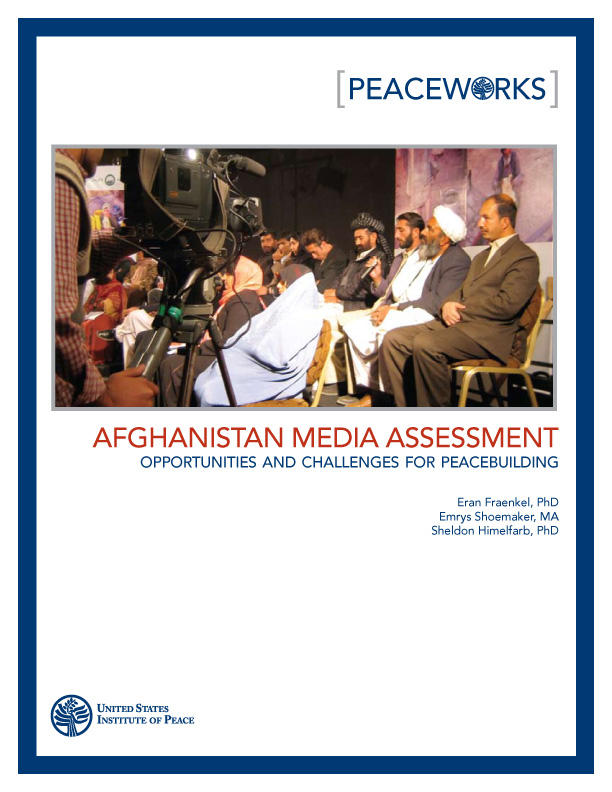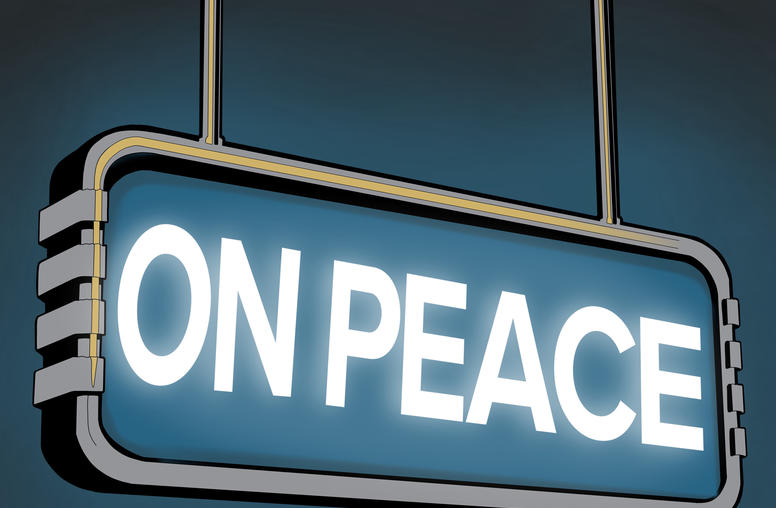Afghanistan Media Assessment
This report was commissioned by the United States Institute of Peace’s Center of Innovation for Media, Conflict, and Peacebuilding. It assesses Afghanistan’s media sector through a new tool developed by USIP, which combines elements of a traditional media assessment with conflict analysis.

Summary
- The primary obstacle to state building in Afghanistan is the historical and ongoing inability of Afghans to establish a mutually acceptable balance of power between any central government and periphery communities and institutions. By serving as an interlocutor for centerperiphery relations, the media could help transform state building from a zero-sum conflict to a positive-sum process in which disagreements are resolved peacefully.
- International donor support for Afghanistan’s media has had two primary goals. The shortterm goal has been to counteract the effects of insurgent communications in order to win the hearts and minds of the Afghan people. The long-term goal has been to create a free and independent media sector that will continue to function after donor support has ended.
- Although millions of dollars have been invested in the development of the Afghan media sector and the growth of private media since 2001 is considered one of Afghanistan’s greatest success stories, neither of these donor goals is being met.
- Donor support for Afghan media has led to the growth of radio and television outlets that are almost entirely dependent on foreign funding—direct and indirect.
- Recent strategic communications policies have neither diminished nor adequately countered the presence of extremist voices in Afghanistan. Despite some examples to the contrary, Taliban communications continue to affect the lives of ordinary Afghans, whereas many communications by and from Western sources do not.
- Neither short- nor mid-term analysis of the Afghan economy—ranked the third poorest in the world by the United Nations Development Program (UNDP)—foresees the growth of a market able to sustain Afghanistan’s domestic media sector without foreign financing.
- The limited impact of Western communications endeavors, in conjunction with the predicted continued weakness of the Afghan economy, reveals an urgent need for a dramatic shift in the media strategies and goals pursued by the United States and its allies.
- First and foremost, donors should invest primarily in the Afghan media’s production and dissemination of socially constructive contents rather than in building media institutions or infrastructure that the Afghan economy cannot support. For these contents to be received as authentic and credible, they must reflect the vulnerabilities and priorities that Afghans themselves have identified as vital.
- Donors should make a multiyear funding commitment to the media in Afghanistan. Support should be allocated to both terrestrial and wireless media through a transparent and competitive process developed jointly by donors and Afghan media experts. Aggressively supporting the dissemination of socially constructive contents through new outlets will permit access to both geographic and demographic segments of the population not adequately served by current media outlets.
- Donors should support media institutions and infrastructure when that support would facilitate the production and dissemination of socially constructive contents, and without the expectation that these institutions or structures will become self-sustaining.
- As often and as intensively as possible, media interventions should be accompanied by face-to-face community outreach activities that provide Afghans an opportunity to put into practice ideas and options that the media have brought to their attention.
- The United States and its allies should coordinate their media-support strategies and work formally with the Afghan media sector to enhance its credibility. In particular, military involvement in media production and dissemination should be wholly restructured to avoid excessive financial and editorial interference.
About the Report
This report was commissioned by the United States Institute of Peace’s Center of Innovation for Media, Conflict, and Peacebuilding. It assesses Afghanistan’s media sector through a new tool developed by USIP, which combines elements of a traditional media assessment with conflict analysis. Following extensive field assessment in Afghanistan, the authors convened a wide array of media and Afghanistan experts in Washington, D.C., to identify key opportunities and challenges for using media more extensively and effectively for peacebuilding.
Eran Fraenkel is an expert and instructor in metrics and evaluation with more than thirty-eight years of experience in international peacebuilding media. He is best known for his work on broadcast media, having produced numerous programs such as Naashe Maalo, an award-winning children’s TV program on intercultural understanding and conflict prevention in Macedonia.
Emrys Shoemaker is a strategic and development communications specialist with particular expertise in leveraging new media for peacebuilding. He is an authority in designing and implementing national and local awareness and communication strategies and has worked with various government and United Nations agencies, as well as with international and local nongovernmental organizations, throughout the Middle East.
Sheldon Himelfarb is an associate vice president at USIP and executive director of the Center of Innovation for Media, Conflict, and Peacebuilding. He has managed peacebuilding programs in numerous conflicts, including Bosnia, Iraq, Angola, Liberia, Macedonia, and Burundi. Himelfarb received the Capitol Area Peace Maker award from American University.



